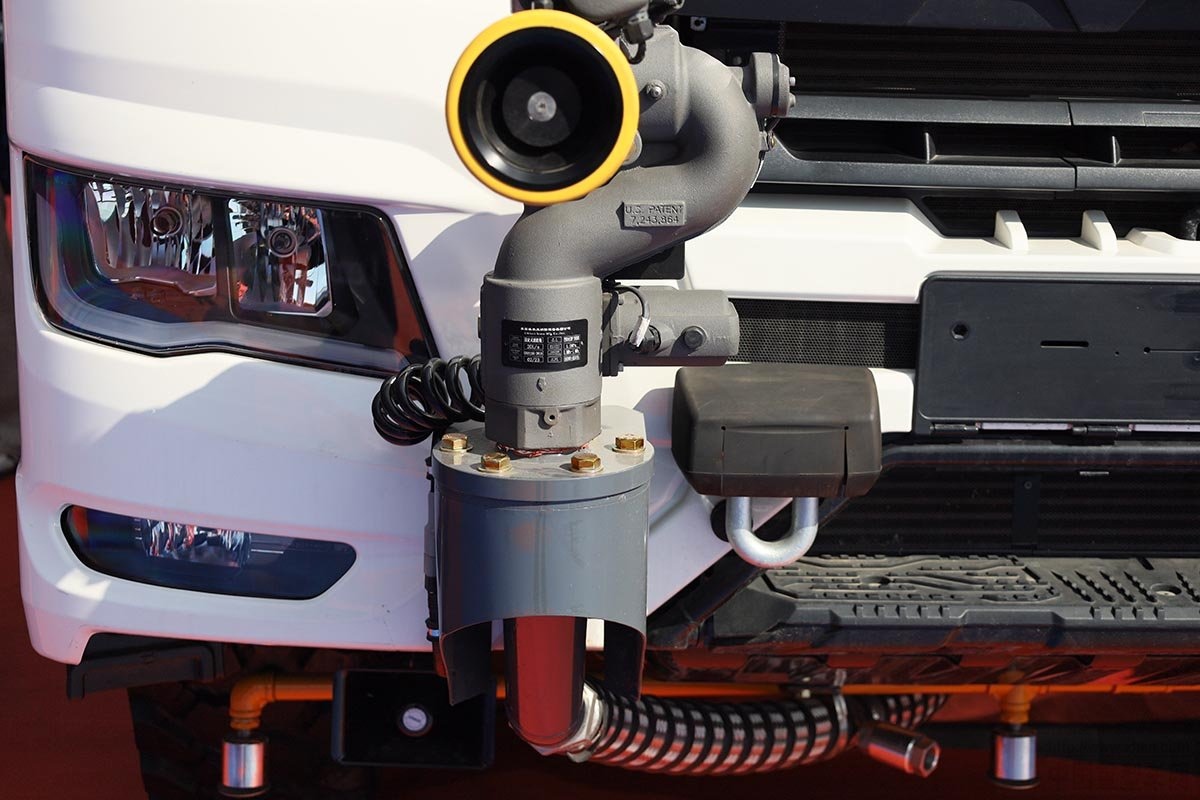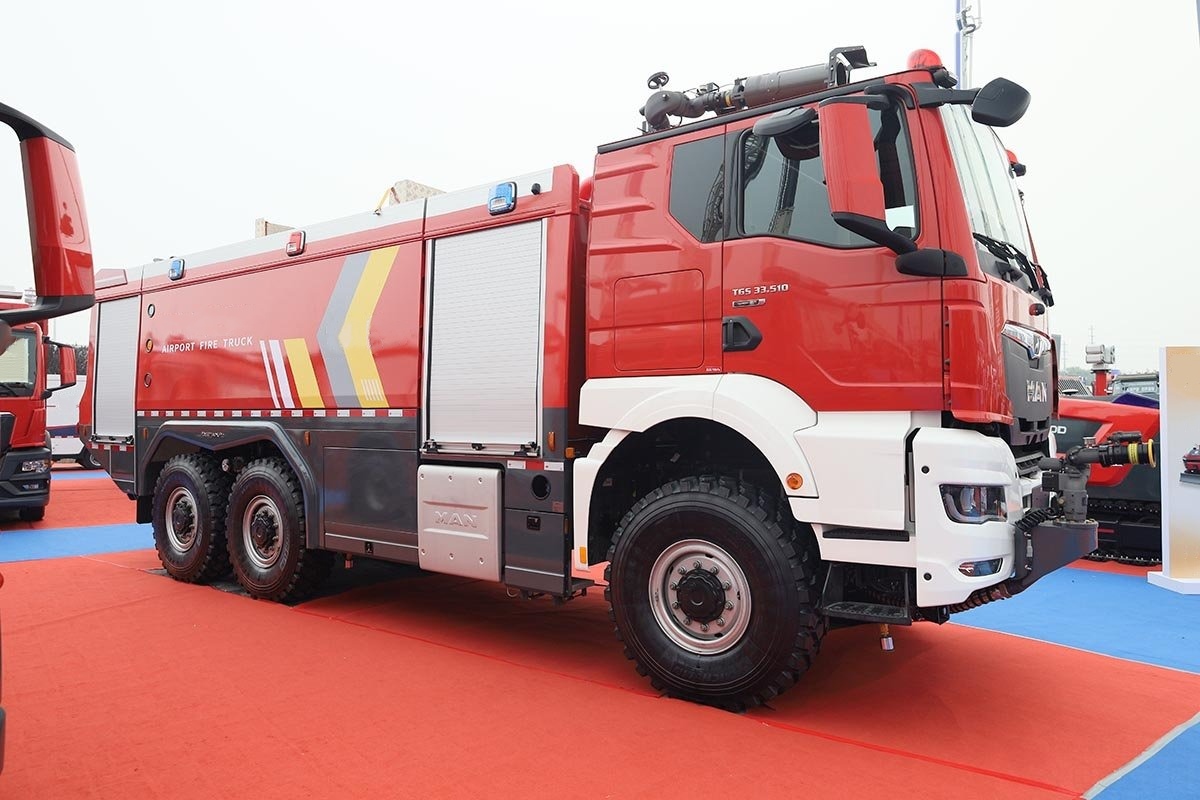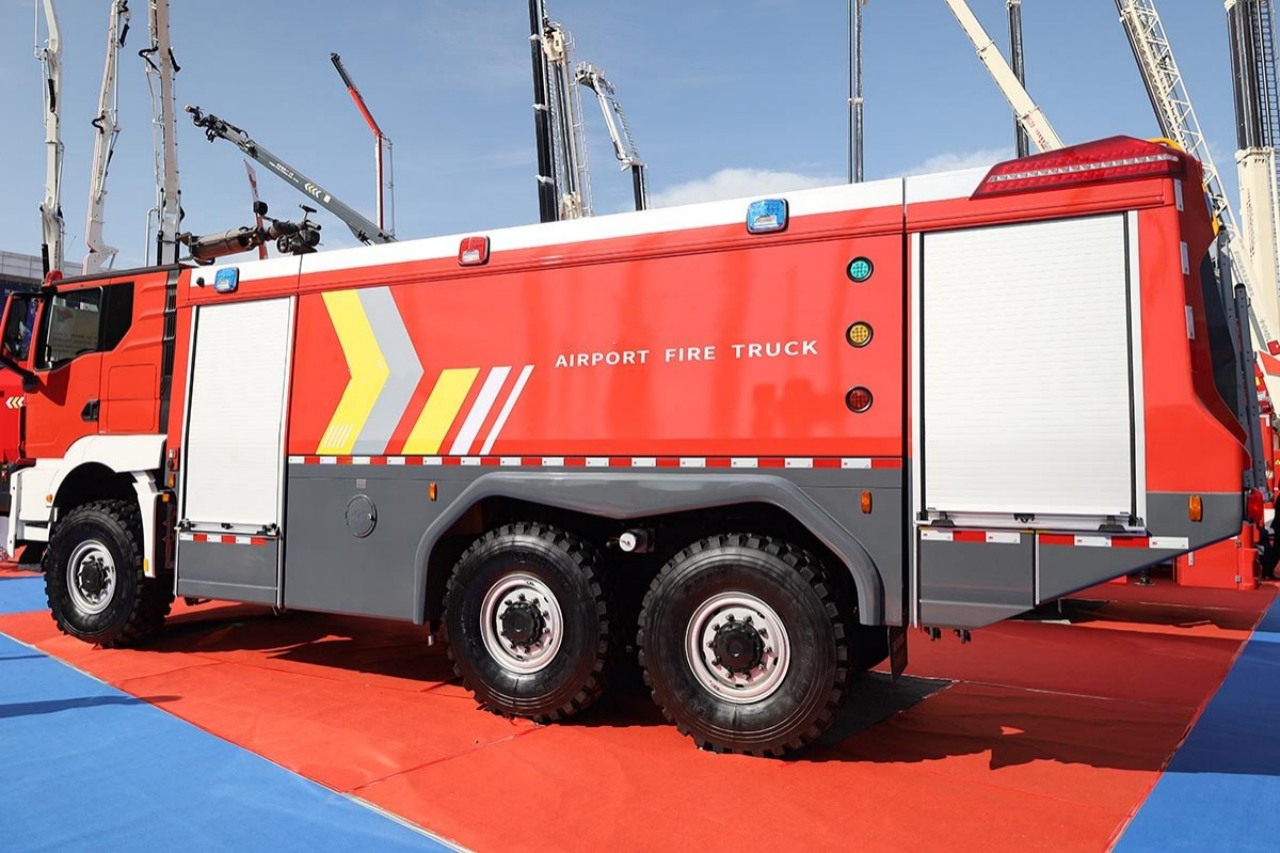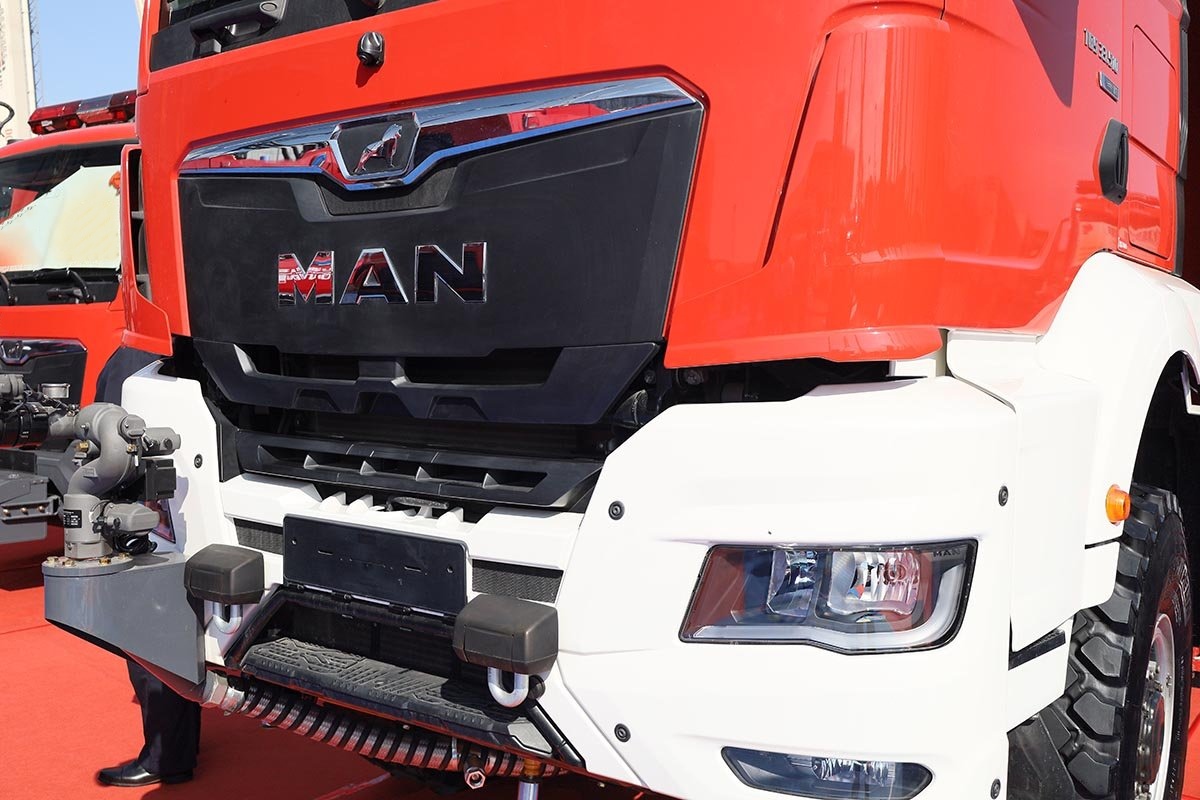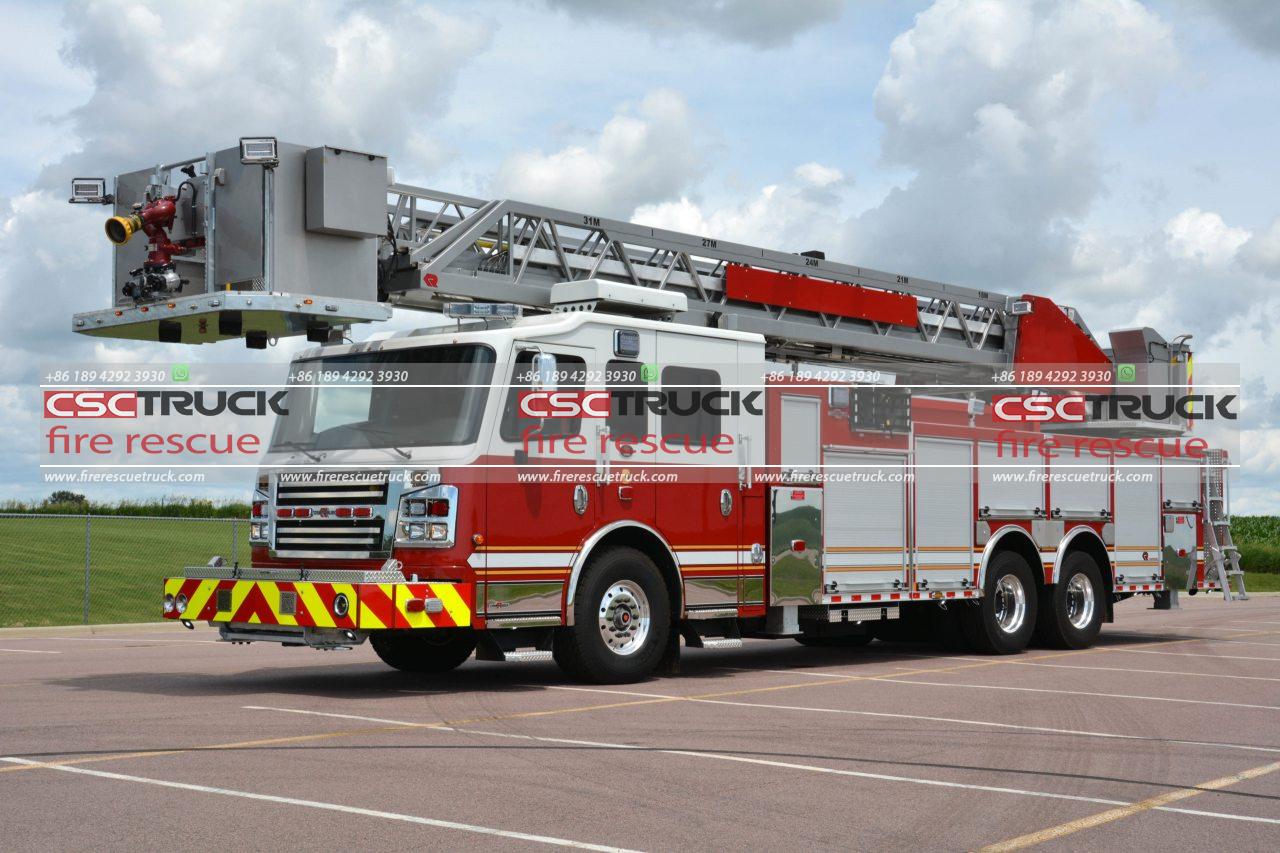A Crash Fire Tender (CFT), also known as an airport crash tender or airport fire truck, is a specialized firefighting vehicle designed primarily for use at airports in aircraft rescue and firefighting (ARFF) operations. These vehicles are engineered to respond rapidly to aviation emergencies such as plane crashes, runway fires, fuel spills, and other incidents where speed, high-capacity fire suppression, and technical capabilities are essential.
Crash Fire Tenders are significantly different from municipal fire engines. While a city fire truck is designed to operate in urban environments, dealing with structural fires and routine emergencies, a crash tender is optimized for unique airport challenges such as flammable aviation fuels, large passenger volumes, and the need for off-road maneuverability across runways and fields.
Key Functions of a Crash Fire Tender
The primary function of a crash fire tender is to extinguish fires, rescue passengers and crew, and secure the aircraft and surroundings in the event of an incident. Some of the core roles include:
- Rapid Response: CFTs are built to reach any point of the airfield within minutes, usually under a strict response time limit such as ICAO’s recommendation of 2–3 minutes.
- Fire Suppression: They carry large quantities of water, foam, dry chemicals, and sometimes gaseous agents to suppress fires quickly, especially those involving jet fuel.
- Rescue Operations: Equipped with cutting tools, ladders, and breathing apparatus, these tenders assist in evacuating passengers and crew.
- Support Services: In incidents without fire, crash tenders are still vital for evacuation support, fuel spill containment, and scene safety management.
Design and Components
Crash Fire Tenders are highly specialized machines, typically featuring a combination of advanced technologies and robust engineering to tackle the intense demands of airfield emergencies.
1. Chassis and Mobility
Crash tenders are often built on 6×6 or 8×8 all-wheel-drive chassis, giving them excellent off-road mobility across runways, grass fields, and uneven terrain. These vehicles can weigh up to 40 tons and still achieve impressive speeds of 70–85 km/h (43–53 mph) due to powerful turbocharged diesel engines.
2. Water and Foam Tanks
A standard CFT carries:
- Water: Between 6,000 and 12,000 liters
- Foam concentrate: Between 500 and 1,500 liters. The foam is mixed with water to produce a fire-suppressing agent particularly effective against fuel-based fires. Some models also include dry chemical powder systems (e.g., Purple-K) and Halon or CO₂ gas for enclosed fire suppression.
3. Pump and Turret Systems
Most CFTs have high-capacity pumps (3,000–6,000 L/min or more) and roof or bumper turrets that can deliver foam or water at long ranges. Some advanced models include piercing nozzles—tools that penetrate an aircraft’s fuselage and deliver suppression agents directly inside, particularly useful when internal cabin fires are inaccessible.
4. Cabin and Controls
The operator’s cab typically includes:
- Panoramic visibility
- Advanced fire control systems
- Thermal imaging cameras
- Navigation and communication equipment
- Protective seating and emergency gear storage
Crew compartments are designed for quick in-and-out operations, with space for multiple firefighters and their rescue equipment.
Types of Crash Fire Tenders
While crash fire tenders are all built with core ARFF capabilities, there are different variants based on size, function, and airport type.
1. Major Foam Vehicles (MFVs)
These are the largest and most powerful crash tenders, typically found at large international airports. They offer extensive fire suppression capabilities and can operate in extreme conditions.
2. Rapid Intervention Vehicles (RIVs)
Smaller, faster units are designed for immediate response. RIVs typically arrive first on the scene and initiate suppression before MFVs arrive.
3. Water Tenders
Support units that supply additional water and foam to primary crash tenders or aid in longer-duration operations.
4. Command and Control Vehicles
Equipped with communication, surveillance, and scene management systems. These vehicles coordinate fire and rescue operations across the airfield.
Standards and Regulations
Crash Fire Tenders are subject to strict standards to ensure their effectiveness and reliability during emergencies. 2 major international organizations provide guidelines:
ICAO (International Civil Aviation Organization)
ICAO categorizes airports based on aircraft size and mandates minimum ARFF requirements, including:
- Response times
- Agent quantities
- Vehicle numbers and capabilities
NFPA (National Fire Protection Association)
In the United States and several other countries, NFPA 414 outlines design, performance, and equipment standards for ARFF vehicles.
Notable Manufacturers
Several manufacturers around the world specialize in crash fire tender production. Some of the most recognized names include:
- Rosenbauer (Austria) – Known for the Panther series
- Oshkosh (USA) – Producer of the Striker ARFF series
- E-ONE (USA) – Offers Titan Force ARFF vehicles
- Angloco (UK) – Supplier of custom-built crash tenders
- Ziegler (Germany) – Offers a wide range of ARFF solutions
Each manufacturer customizes their vehicles according to client specifications, terrain challenges, and airport size.
Real-World Applications
Crash Fire Tenders have been critical in numerous real-world incidents. Their rapid response and effective suppression have saved hundreds of lives in situations involving engine fires, landing gear collapses, and runway overruns.
For example, during the Emirates Flight 521 incident in 2016 at Dubai International Airport, ARFF vehicles arrived within minutes, deployed foam lines, and assisted in evacuating 300 passengers and crew with only 1 fatality—a testament to the efficiency and necessity of crash fire tenders.
The Future of Crash Fire Tenders
As aviation technology evolves, so too do the vehicles that support its safety. Future developments in crash fire tenders may include:
- Electric or hybrid propulsion for reduced emissions
- Autonomous systems for quicker deployment and reduced risk to firefighters
- AI-assisted surveillance for better scene assessment
- Improved firefighting agents with less environmental impact
Research is ongoing into using robotic drones in conjunction with CFTs for aerial surveillance during incidents, giving incident commanders better real-time data.
Conclusion
A Crash Fire Tender is more than just a fire truck—it is a life-saving machine, purpose-built to meet the critical demands of airport safety. With their high-performance capabilities, rapid response systems, and specialized equipment, crash fire tenders stand as the first line of defense in aviation emergencies. As air travel continues to grow globally, the role of these vehicles in ensuring passenger and crew safety becomes increasingly vital. Whether responding to a flaming jetliner or a minor runway incident, crash fire tenders are the unsung heroes keeping skies and runways safe.
